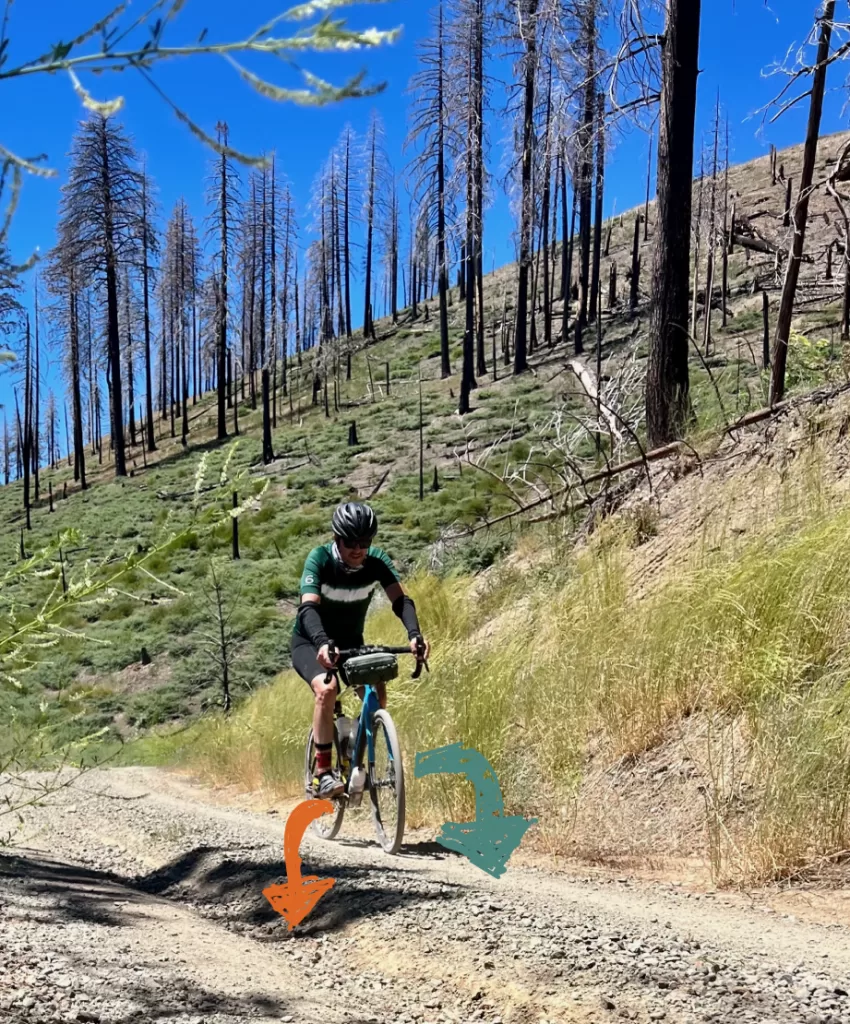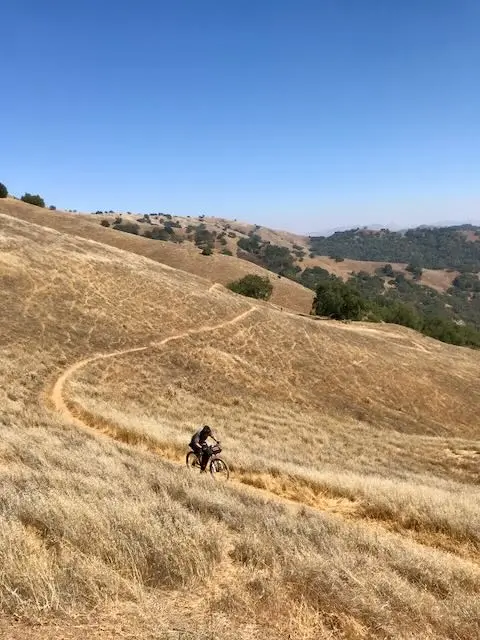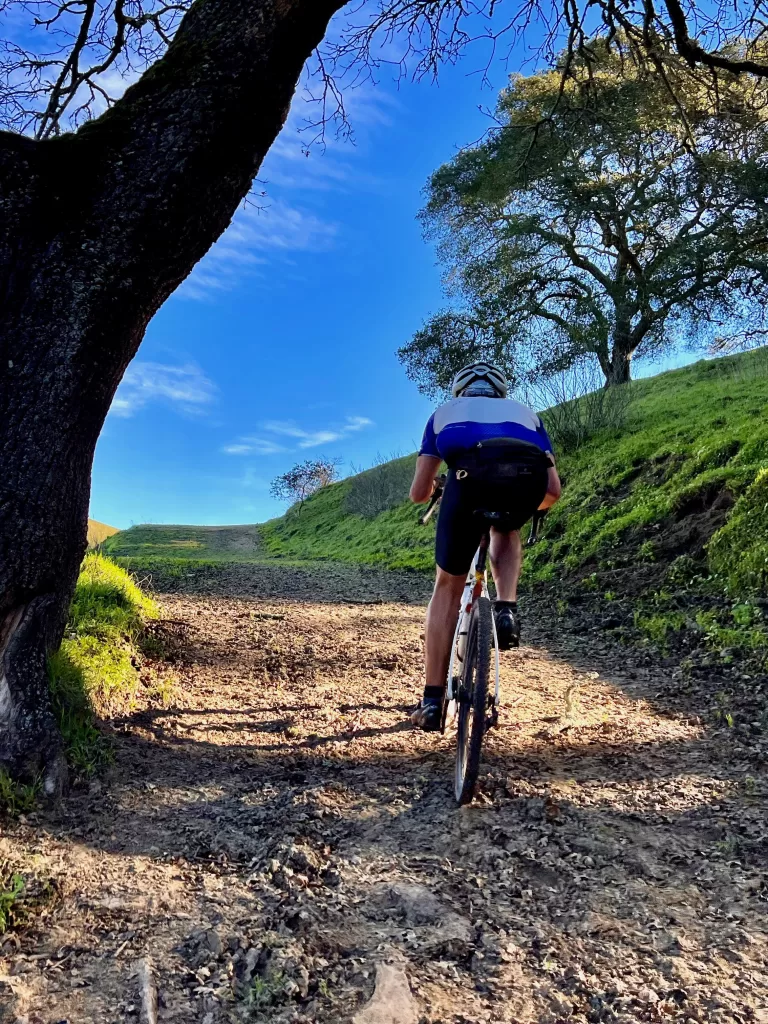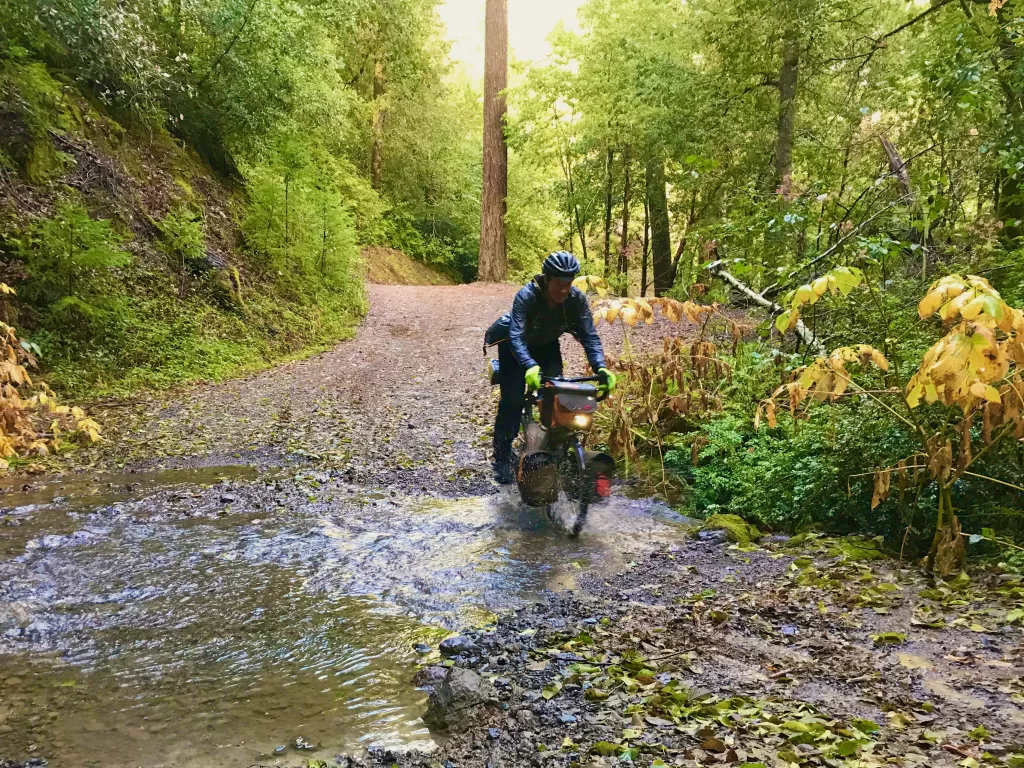As cycling tips go, this is a simple but overlooked one: Become more ambidextrous. Here are two ways ambidexterity will make you a better cyclist.
1. Safety
Whether we’re aware of it or not, most of us tend to have a preferred side when we unclip from our pedals. Being equally comfortable unclipping on the right and left is one way that becoming more ambidextrous will make you a better cyclist.
Here’s a scenario almost anyone who uses clipless pedals can relate to: You roll up to the start of a group ride or to a traffic light and begin to unclip on one side before you realize you and your bike are beginning to lean the other way. The foot you need to unclip is still clipped in and…oomph! Down you go. Hopefully embarrassment is the only consequence. But I’ve heard of riders breaking wrists and even hips this way.
If you ride gravel (or are a mountain biker), the consequences can be even greater. That’s why when I teach gravel cycling skills I ask riders if they have a foot that they usually unclip first. Most haven’t thought about it, but when prompted quickly realize that they do, in fact, tend to clip out on either the left or right side.
Why does it matter? The images below illustrate two low-consequence scenarios where it matters. In the first image, because of the rut down the middle, a rider inclined to unclip on the right will be have a long way to go to get their foot safely on the ground.

In the second image, the rider is on a long single track traverse with the hillside’s slope, or fall line, running from right to left. Suppose the rider needs to stop to wipe away sweat from their eyes. Unclipping on the left is risky given the way the hillside drops away. Unless the rider is comfortable unclipping on the right, it might be a long wait before the traverse is over and there’s a safe place to unclip on the left.

Let’s simply call this the practice of “high side unclipping.” In other words, on any uneven terrain (and this can include paved streets!) it’s safest to unclip on the high side. And since you don’t get to decide which is the high side, you will become a more confident rider willing to tackle more challenging terrain if you know you are able to unclip just as comfortably on the left as on the right.
The images below capture two more scenarios where ambidextrous unclipping makes a difference. In the first image, a rider is on a steep climb with lots of loose gravel. At any second they may lose traction. Depending on which way the bike is leaning when that happens, it might be necessary to unclip quickly on the right or the left.

In the next image, a rider is crossing a stream flowing from rider’s right to left. “High side unclipping” applies here too. The rider should be able to unclip on the upstream side where a stronger bracing position against the flow can be achieved (not to mention that the rider in the image also has a drop off to the left!).

Even if you don’t plan on any stream crossings, both images illustrate the importance of being able to unclip on either side with equal ease. What the examples capture is how various forces keep our bikes constantly leaning to one side or the other.
While climbing we introduce the leaning to increase our leverage. While on a touring or bikepacking setup, the added weight on our bikes exaggerates the subtle leaning going on beneath us. If balance can be lost on either side at any time, it’s best to be able to unclip quickly on whichever side you’re leaning to.
If balance can be lost on either side at any time, it’s best to be able to unclip quickly on whichever side you’re leaning to.
2. Comfort
Cycling tips that increase comfort are golden. After all, the more comfortable you are on the bike the more likely you are to ride (and the longer you’ll be willing to ride).
The second way ambidexterity can make you a better cyclist is a lesson I learned the hard way. When I successfully complete the 1200km Paris-Brest-Paris ride last month, I couldn’t believe how smoothly everything had gone. There wasn’t a single mechanical or navigational problem and my legs held up great. But there was one little “pinch point” that has continued to nag me. And by “pinch point,” I literally mean a pinched nerve in my left hand.
I am right-handed, which means all of the things I do while on my bicycle that require removing a hand from the handlebars are done with my right hand. Whether grabbing a water bottle, wiping sweat, swiping screens on my GPS device, pulling out my phone to take a picture, or reaching into my handlebar bag for something to eat, I stabilize the bike with my left hand while my right hand carries out the task.
Over shorter distances this may not matter much. But over 74 hours at Paris-Brest-Paris it meant my left hand and arm did a lot more work. And the numbness I began to feel in my left hand could have been avoided if I had been more ambidextrous.
Even if you don’t intend to ride long enough for this to matter, it’s simply good practice, for example, to be able to pull a water bottle out of a cage with either hand. Taking arm warmers off (or putting them on), putting a jacket on, signaling a turn, and other tasks require one-handed riding where first one hand and then the other does the stabilizing.
If you’re not comfortable releasing your right (or left) hand then many tasks will require coming to a stop. For safety reasons, stopping to put on a jacket (except for very skilled cyclists) is probably a good idea. The more important question is whether a preference to stabilize the bike with a particular hand when riding one-handed is a sign of a deeper anatomical imbalance, the correction of which could improve your comfort and confidence on the bike.
Habits are difficult to overcome, so you might consider setting up your cockpit and water bottle cages to force yourself to use your non-dominant hand. Let’s assume you’re right-handed. If you use a stem bag, try placing it to the left of the stem. If you have side-loading water bottle cages, set them up so the opening is on the left side of the bike.
If you keep your phone in a jersey pocket and take it out while riding, try putting it on the opposite side to force yourself to take it out with your non-dominant hand.
If you’re at all unsure, try these suggestions in a parking lot or a grass field before heading out into traffic or to a technical trail. It’s possible that you’ll discover you are less confident in your ability to stop abruptly or make an evasive maneuver with only your right hand on the bars if you normally prefer one-handed riding with your left hand on the bars.
For me, there’s a level of comfort in keeping my left hand on the bars since my left brake lever operates the stronger front brake. Either way, when riding with one hand you should always be ready to drop whatever is in your free hand in case you need to grab a handful of brakes with both hands.
The aim of this cycling tip is to make you more versatile by training yourself to unclip on both sides and to ride one-handed with either hand. Becoming ambidextrous in these ways will increase your safety and comfort on the bike and make you a better cyclist.
